Sasada Lab.
Unofficial Website
Research theme
Molecular spectroscopy in the mid-infrared region
In the mid-infrared region, particularly the 3-Κm wavelength region, various molecules have strong absorption spectral lines of fundamental vibrational bands. However, it is difficult to carry out sub-Doppler resolution spectroscopy becuase there is no tunable light sources with a narrow spectral width. We have built a difference frequency generation (DFG) system, which provides tunable 3.4-Κm radiation with a few hundred kilo-hertz line width1,2.
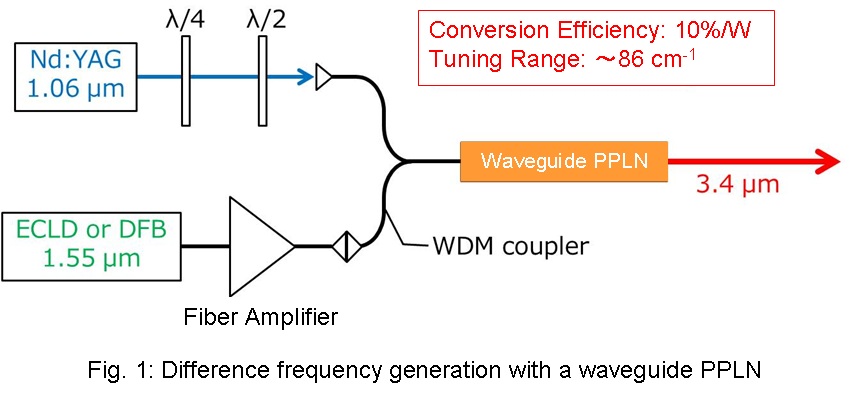
We successfully observed sub-Doppler resolution spectra of the methyle iodide using the DFG source frequency-stabilized with Pound-Drever-Hall method and a cavity-enhanced absorption cell4. Figure 2 indicates the cavity-enhanced absorption cell, and Figure 3 illustrates the experimental setup.
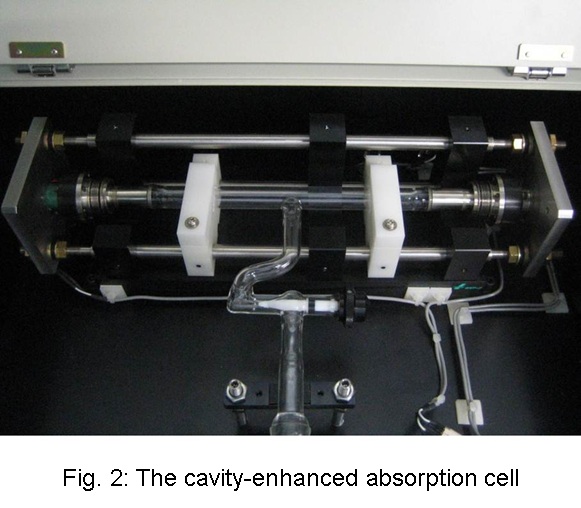
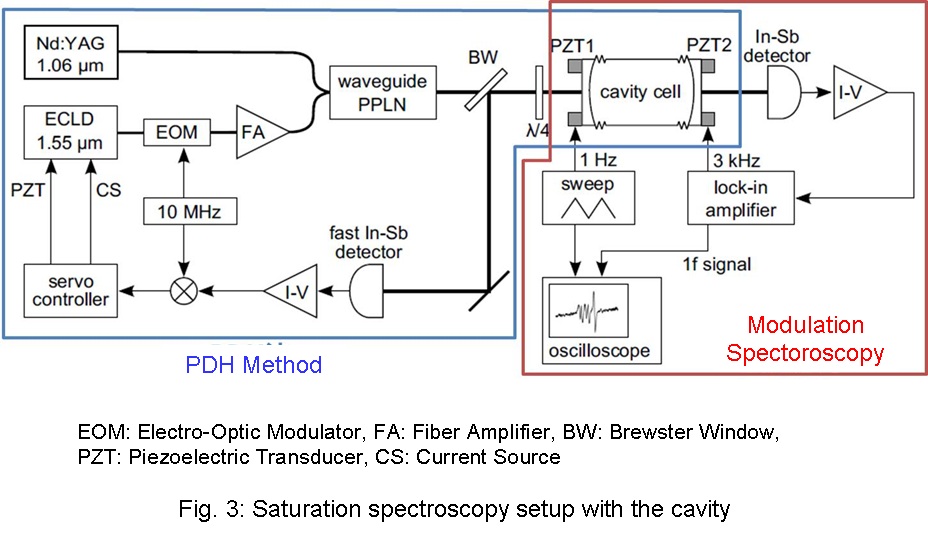
Figure 4 depicts observed spectrum of methyle iodide. In Doppler-limited resolution spectroscopy, the spectral linewidth should be about 130 MHz. But each spectral linewidth is 250 kHz because of sub-Doppler resolution spectroscopy! We resolved the hyperfine structures of CHI3, except for a few lines whithin the tunable He-Ne laser. We measured the frequency separation between the hyperfine components, and determined the hyperfine coupling constant.
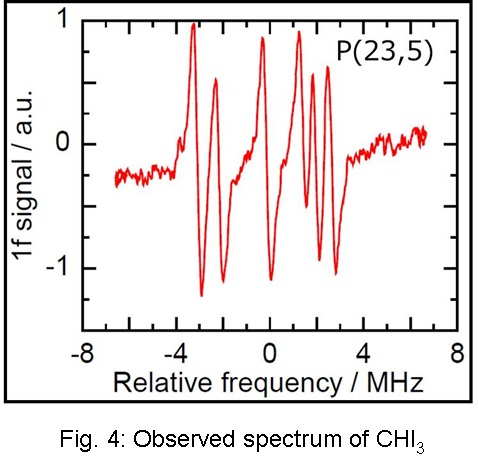
Subsequently we have introduced an optical frequency comb into our spectorometer to measure the frequency of absorption lines. The DFG source frequency is stabilized at the absorption line. The difference frequency between the pump and signal sources are measured by the comb referenced to the international atomic time. Therefore, we can determine the absolute frequency of molecule line. Here, we have measured 56 transition frequencies of the ν3 band of methane with an uncertainty of less 10 kHz(less 10-10 relative accuracy)3. Figure 5 illustrates setup of absolute frequency measurements using the optical comb.
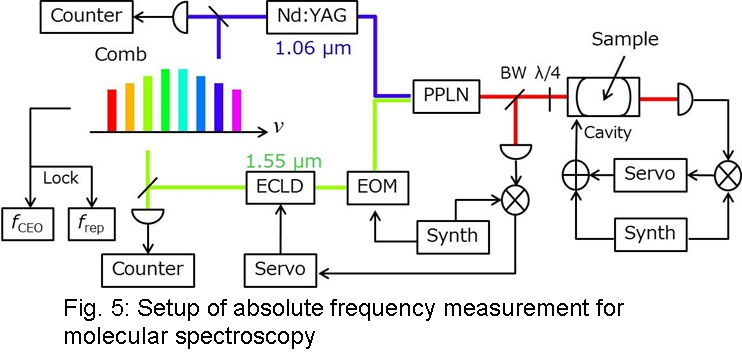
YouTube shows our research.
List of publications
- K. Anzai, X. Gao, H. Sasada, and N. Yoshida, "Narrow Lamb Dip of 3.4 Κm Band Transition of Methane with Difference Frequency Generation and Enhancement Cavity," Japanese Journal of Applied Physics, 45(4A), 2771 (2006).
- M. Abe, K. Takahata and H. Sasada, "Sub-Doppler resolution 3.4 Κm spectrometer with an efficient difference-frequency-generation source," Optics Letters, 34(11), 1744 (2009).
- K. Takahata, T. Kobayashi, H. Sasada, Y. Nakajima, H. Inaba, and F.-L. Hong, "Absolute frequency measurement of sub-Doppler molecular lines using a 3.4-Κm difference-frequency-generation spectrometer and a fiber-based frequency comb," Physical Review A, 80, 032518 (2009).
- S. Okubo, H. Nakayama, and H. Sasada, "Hyperfine-resolved 3.4-Κm spectroscopy of CH3I with a widely tunable difference frequency generation source and a cavity-enhanced cell: A case study of a local Coriolis interaction between the v1 = 1 and (v2,v6l) = (1,22) states," Physical Review A, 83, 012505 (2011).
- S. Okubo, H. Nakayama, K. Iwakuni, H. Inaba, and H. Sasada, "Absolute frequency list of the Λ3-band transitions of methane at a relative uncertainty level of 10-11," Optics Express, 19(24), 23878 - 23888 (2011).
- M. Abe, K. Iwakuni, S. Okubo, and H. Sasada, "Accurate transition frequency list of the Λ3 band of methane from sub-Doppler resolution comb-referenced spectroscopy," Journal of the Optical Society of America B, 30(4), 1027 (2013).